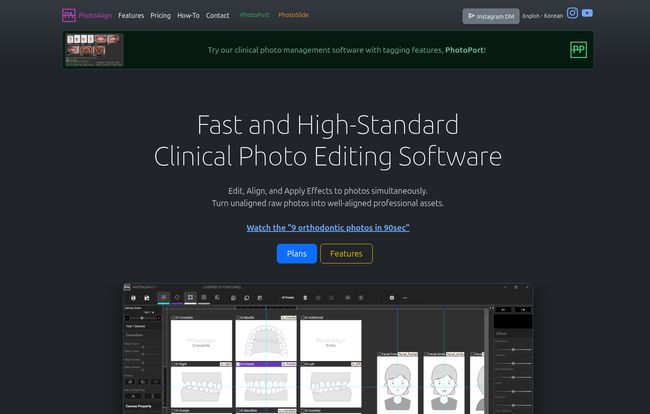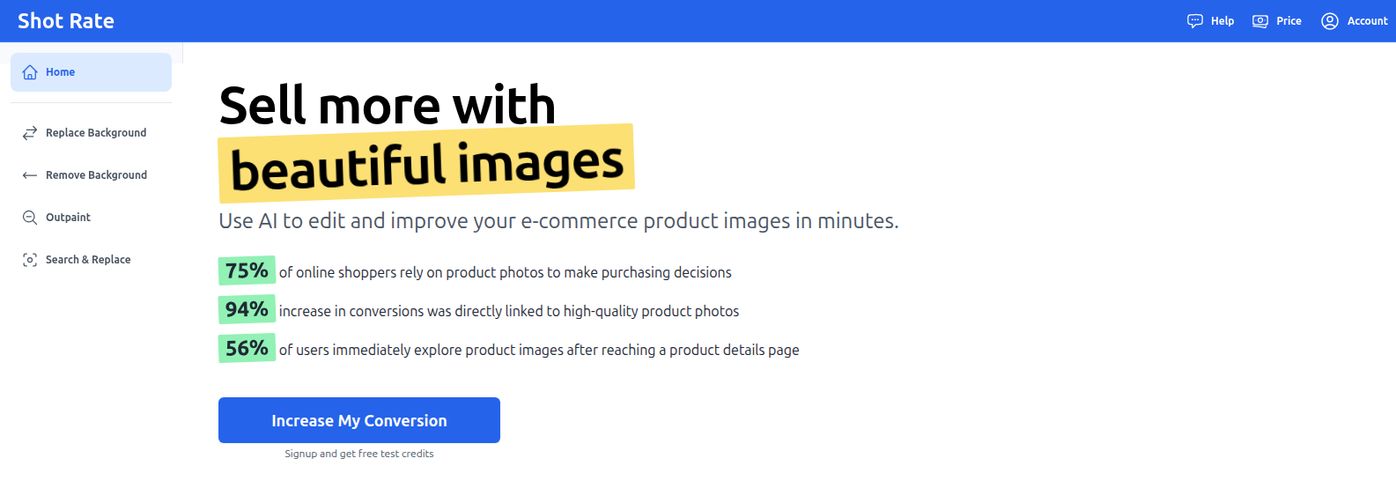If you're in any kind of clinical practice, especially orthodontics, you know the drill. You take a set of patient photos—intraorals, facials, the whole nine yards. And then… the real work begins. The endless, soul-crushing drag of rotating, cropping, resizing, and trying to get everything to look consistent. It’s a time-suck. A tedious, mind-numbing task that nobody enjoys, yet it's absolutely critical for case presentations, patient records, and professional communication.
For years, we've cobbled together solutions. A bit of Photoshop here, some PowerPoint gymnastics there. Maybe you have that one tech-savvy assistant who’s a wizard with it, but what happens when they're on vacation? Consistency goes right out the window.
So when I heard about PhotoAlign, a tool that claims to use AI to automate this whole mess, my first reaction was a healthy dose of skepticism. I've seen a lot of software promise to be a magic wand. Most of them aren't. But I decided to take a closer look, and folks… I’m actually a little bit impressed.
So What is PhotoAlign, Really?
At its heart, PhotoAlign is an AI-powered software designed specifically for editing and standardizing clinical photos. Think of it less as a full-blown Photoshop replacement and more like a highly specialized, ruthlessly efficient assistant. Its one job is to take your raw batch of clinical images and whip them into professional, perfectly aligned shape. It's part of a package called PhotoAlign Studio, which also includes PhotoPort for managing your image library—a nice little bonus.
It’s built on a simple premise: you dump your photos in, and the AI gets to work. It identifies what kind of photo it is (e.g., frontal smile, right buccal) and automatically places it in the correct slot on a template. From there, you can make micro-adjustments to a whole set at once. It’s all about creating uniformity, fast.

Visit PhotoAlign
Solving the Biggest Time-Waster in the Clinic
I can't overstate how much time is lost to photo management. Let’s say you spend just 10-15 minutes editing a single patient's photo set. If you see five new patients a day, that's over an hour of someone's time, every single day. That's an hour they could be spending on patient care, marketing, or, you know, not wanting to throw their computer monitor across the room.
Manually editing photos is like herding cats. Each image has its own idea of which way it wants to be oriented. PhotoAlign aims to turn that chaotic mess into a well-drilled marching band. By batch processing, it applies the same rules for rotation, cropping, and brightness to every photo in the set. This consistency is huge. Suddenly, your before-and-afters look incredibly professional because they’re framed and lit identically. It just elevates the entire presentation.
The Standout Features I Actually Like
A long feature list can be deceiving. What matters is what you'll actually use day-to-day. Here’s what caught my eye.
AI-Powered Photo Allocation is the Secret Sauce
This is the real magic. The fact that the software can look at a jumble of photos and automatically sort them into a five-view intraoral template is a massive step up. It's not perfect yet, and it's currently trained on specific orthodontic and facial photo sets, but for its intended purpose, it works surprisingly well. It removes that initial, tedious step of manually dragging each image into the right box. What a relief.
Batch Editing and Superimposition
This is the core function. You can designate one photo as your “reference photo” and then superimpose the others to get the alignment just right. Nudging one photo to align with the occlusal plane can apply to all the others in the series. It's this one-to-many editing model that creates such a consistent final product. No more slight head tilts or different zoom levels between your initial, progress, and final shots.
A Few Other Nice Touches
Beyond the headline features, some smaller things show the developers actually understand the workflow. LiveWatch automatically imports photos from a designated folder as you take them, which is slick. The built-in image editor is simple but has what you need for clinical shots—brightness, contrast, and color balance—without the overwhelming complexity of a pro photo editor. And the ability to toggle between the original and edited photo with a single click is great for seeing how much you've improved the image.
Who Should Buy This? And Who Should Pass?
Look, no tool is for everyone. In my opinion, PhotoAlign is a no-brainer for any orthodontic office or dental clinic that takes standardized photo sets on a regular basis. If you value professionalism and want to claw back dozens of hours of staff time each month, this is a very strong contender.
However, there are a few people who might want to hold off. If your practice is 100% Mac-based, you're out of luck for now. This is a Windows-only application. Also, if you’re a general practitioner who only takes the occasional one-off photo with no need for complex, multi-image layouts, this might be a bit of overkill. The AI is specifically trained for certain types of photos, so if your photography needs are outside that box, you won't get the full benefit.
Breaking Down the Cost: Is the Price Right?
Okay, let's talk about the investment. Subscription fatigue is a real thing, and I get antsy about adding another monthly bill too. But the pricing here seems… pretty fair, actually.
| Plan Type | Price | Best For |
|---|---|---|
| Monthly Subscription | $10.99 per month | Trying it out or very small practices. |
| Annual Subscription | $99 per year | Solo practitioners committed to the system. |
| 2+1 Subscription | $198 per year (for 3 licenses) | Small to medium clinics with multiple workstations. |
Honestly, when you weigh the cost against the time saved, it's an easy calculation. At $99 a year, if the software saves you just two or three hours of work over the entire year, it’s already paid for itself. The 2+1 deal, which brings the cost down to $66 per license, is particularly attractive for offices with a few ops. It's important to note they have a promotion running until July 31st, 2025, so these prices might be temporary.
The Not-So-Great Stuff (Because Nothing's Perfect)
I wouldn't be giving you a fair review without pointing out the downsides. First and foremost, the Windows-only limitation is a major hurdle for a lot of modern, Mac-friendly clinics. I hope they develop a macOS version soon. Second, the requirement for an internet connection for use and authentication could be an issue if your office Wi-Fi is spotty.
Finally, the AI's specialization is both a strength and a weakness. It's great for orthodontics now, but its utility is limited until they train it on more types of photos. It’s a specialized tool, not a swiss army knife.
Final Verdict: Is PhotoAlign a Worthy Addition to Your Toolkit?
After spending some time looking at PhotoAlign, I've moved from skeptical to cautiously optimistic. This isn't some vaporware promising to revolutionize everything. It’s a focused, practical tool that solves a very real, very annoying problem.
It streamlines a workflow that has been a bottleneck in practices for decades. It boosts the quality and consistency of your clinical photography, which in turn boosts your brand's professionalism. For the right clinic—a Windows-based practice that takes a lot of standardized photos—I think PhotoAlign is a fantastic investment. It's one of those rare tools that can genuinely give you and your team back your most valuable asset: time.
Frequently Asked Questions
Can I use PhotoAlign on my Apple Mac computer?
Unfortunately, no. As of now, PhotoAlign is exclusively available for the Windows operating system. This is probably the biggest drawback for Mac-based clinics.
Is PhotoAlign a one-time purchase or a subscription?
PhotoAlign operates on a subscription model, with monthly and annual payment options available. There is currently no option for a one-time purchase for a lifetime license.
Is the software difficult to learn for my staff?
No, it's designed to be quite intuitive. The user interface is clean and focused. Because it automates many of the most repetitive tasks, the learning curve is much gentler than with a complex program like Adobe Photoshop.
What is PhotoPort and is it included?
PhotoPort is the photo management component that comes with PhotoAlign. It helps you organize and access your clinical photos. Yes, it's included in all subscription plans along with PhotoAlign, as part of the PhotoAlign Studio.
Does the AI work for all types of medical images?
Not at this time. The AI allocation feature is specifically trained for orthodontic intraoral photos (in five standard orientations) and facial photos (in seven standard postures). While you can manually edit other photos, the automatic sorting is limited to these types.
What happens if my internet goes down?
The software requires an internet connection for operation and license authentication. If your internet connection is down, you likely won't be able to use the software until it's restored.
Conclusion
In the constant search for efficiency, we often look for huge, sweeping changes. But sometimes, the biggest wins come from solving the small, persistent annoyances. PhotoAlign does just that. It takes the tedious, frustrating task of clinical photo editing and makes it simple, fast, and consistent. For practices drowning in photo admin, it’s not just a nice-to-have; it could be the best hundred bucks you spend all year.



